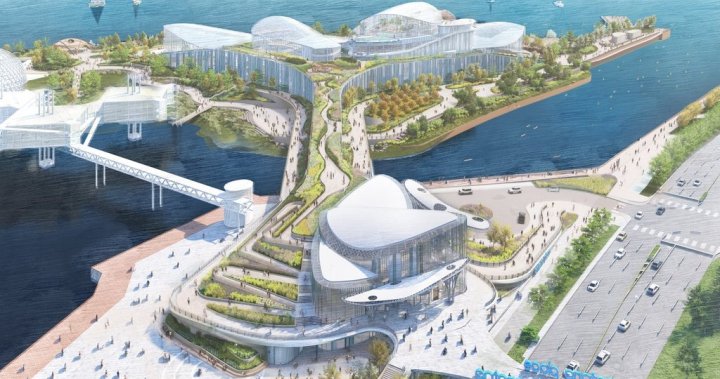The future of the beloved Ontario Science Centre remains up in the air, even as the government pushes ahead with plans to relocate the iconic institution to Ontario Place.
When pressed yesterday during question period about specific timelines, Infrastructure Minister Kinga Surma offered few concrete details about when visitors might expect to experience the science centre in its controversial new waterfront location.
“We’re working through all of the technical aspects of the plan,” Minister Surma told legislators, adding that the government continues to “refine the vision” for the attraction’s eventual home at Ontario Place.
The relocation has stirred intense debate since Premier Doug Ford’s government announced the move last April. Critics have questioned whether the new facility – planned to be roughly half the size of the current Don Mills location – can adequately house the centre’s extensive collection of interactive exhibits and educational programs.
Jane McKenna, former Burlington MPP who now works with Science Educators of Ontario, expressed concern about the scaled-down footprint. “The science centre isn’t just exhibits – it’s workshop spaces, classrooms, and room for thousands of students to explore simultaneously. We’re not convinced the government understands what’s at stake here.”
The original Ontario Science Centre, which opened in 1969, has welcomed more than 53 million visitors over its five decades of operation. Its current building, designed by renowned architect Raymond Moriyama, features distinctive brutalist architecture that many consider historically significant in its own right.
The Ontario Science Teachers’ Association released polling data last month showing 68 percent of GTA residents oppose the relocation, with concerns centered on accessibility for school groups and preservation of the centre’s educational mandate.
“The Don Mills location serves about 200,000 students annually on field trips,” said Marcus Wong, the association’s president. “It’s centrally located with dedicated school bus parking and infrastructure built specifically for large educational groups. The waterfront location presents significant logistical challenges.”
The government has maintained that relocating the centre forms a critical part of its Ontario Place redevelopment strategy – a project that includes controversial private development by Austrian spa company Therme Group.
When asked about preservation of exhibits, Minister Surma indicated that “the most beloved and popular exhibits will find a home in the new centre,” though she declined to provide specifics about which experiences might be cut or scaled back.
Infrastructure Ontario documents obtained through freedom of information requests suggest the new science centre will occupy approximately 25,000 square meters – compared to the current facility’s 53,000 square meters. Ministry officials dispute these figures but have yet to release official specifications.
Meanwhile, the current science centre building requires significant repairs, with government estimates placing renovation costs at approximately $369 million – a figure disputed by independent engineering assessments commissioned by preservation advocates, who suggest targeted repairs could cost substantially less.
Rebecca Winthrop, who brings her two children to the science centre monthly, feels caught in the middle of the debate. “My kids love this place. I just want to know where they’ll be exploring science in the future, and whether it will offer the same wonder they experience now. The uncertainty is frustrating for families who count on this institution.”
The Ontario Science Centre’s staff, represented by OPSEU, have expressed concerns about potential job losses during the transition. Union representative Jordan Williams notes: “We’ve received no guarantees about staffing levels at the new facility. These are specialized educators and exhibit technicians with irreplaceable institutional knowledge.”
For now, the centre continues operating at its Don Mills location with no announced closure date, leaving visitors, employees, and science education advocates wondering about its future.
The government promises more details will emerge in coming months as architectural plans are finalized, but with provincial elections approaching in 2026, some observers question whether the timeline for this significant cultural shift might extend beyond the current government’s mandate.
“Science centres need careful planning,” noted Dr. Elena Kazakova, museum studies professor at the University of Toronto. “They’re not just buildings – they’re complex educational ecosystems that take years to develop properly. Rushing this process would be a disservice to generations of future scientists.”






